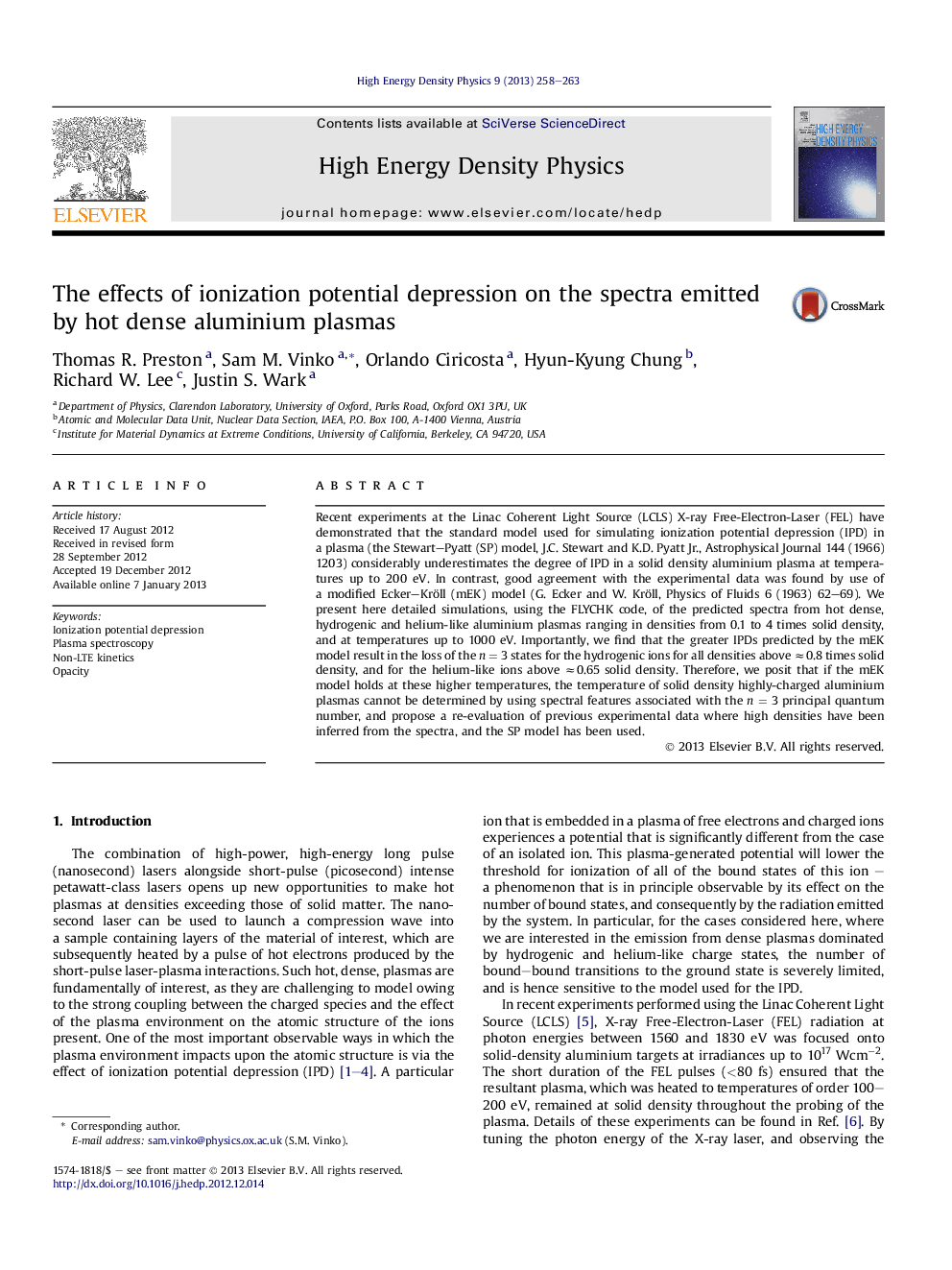| Article ID | Journal | Published Year | Pages | File Type |
|---|---|---|---|---|
| 1772428 | High Energy Density Physics | 2013 | 6 Pages |
Recent experiments at the Linac Coherent Light Source (LCLS) X-ray Free-Electron-Laser (FEL) have demonstrated that the standard model used for simulating ionization potential depression (IPD) in a plasma (the Stewart–Pyatt (SP) model, J.C. Stewart and K.D. Pyatt Jr., Astrophysical Journal 144 (1966) 1203) considerably underestimates the degree of IPD in a solid density aluminium plasma at temperatures up to 200 eV. In contrast, good agreement with the experimental data was found by use of a modified Ecker–Kröll (mEK) model (G. Ecker and W. Kröll, Physics of Fluids 6 (1963) 62–69). We present here detailed simulations, using the FLYCHK code, of the predicted spectra from hot dense, hydrogenic and helium-like aluminium plasmas ranging in densities from 0.1 to 4 times solid density, and at temperatures up to 1000 eV. Importantly, we find that the greater IPDs predicted by the mEK model result in the loss of the n = 3 states for the hydrogenic ions for all densities above ≈0.8 times solid density, and for the helium-like ions above ≈0.65 solid density. Therefore, we posit that if the mEK model holds at these higher temperatures, the temperature of solid density highly-charged aluminium plasmas cannot be determined by using spectral features associated with the n = 3 principal quantum number, and propose a re-evaluation of previous experimental data where high densities have been inferred from the spectra, and the SP model has been used.
